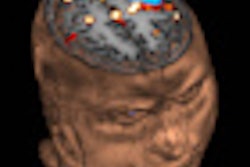Dear AuntMinnie Europe Member,
If you were to mention "women's imaging" to a random group of European radiologists during the 1990s, chances are it wouldn't have meant much to them. The concept was not well established outside of North America, and the term was not in common usage in Europe.
An article in the German-language journal, Wien Med Wochenschr (2001, Vol. 151:21-23, pp. 546-547), changed the situation. In it, the article's lead author -- Dr. Franz Kainberger, a radiologist at the University of Vienna in Austria -- explained why women's imaging is an integral diagnostic concept.
The term is now employed widely, and most radiologists understand that it incorporates mammography, breast MRI, and breast and ob/gyn ultrasound, as well as bone densitometry. Furthermore, the European market for women's medical imaging products is projected to grow by 26% more than 2009 levels to hit $1.6 billion in sales by 2016, according to analysts Frost & Sullivan. Read more here.
Against this background, I'm delighted to introduce you to our Women's Imaging Digital Community. This special area of our site will provide in-depth, highly focused news on key technologies and new clinical developments, such as mammography, digital breast tomosynthesis, spectral imaging, computer-aided detection, breast MRI, and breast ultrasound.
For example, learn about a new Irish study that found that reducing radiation dose during mammography studies actually leads to better image quality.
Please take a look at this new section and send me your feedback and ideas. We can only improve and develop it with your support. We will be updating the material regularly, so please come back to watch it grow. You can also reach the community at women.auntminnieeurope.com.
This community is the first in a series of special sections on medical imaging modalities that we plan to unveil during the coming months. I hope you find them useful and informative.
In other news, we're pleased to bring you the latest installment of The Maverinck, Dr. Peter Rinck's column on important developments in radiology. In this week's edition, Dr. Rinck addresses the touchy topic of plagiarism, which came to the fore earlier this year with the revelation a prominent German government minister had apparently plagiarized his doctoral thesis.
Dr. Rinck has found that plagiarism isn't limited to high-powered politicians -- his own work has been lifted without permission multiple times, thanks to the ease with which Google brings content to our fingertips. Find out why he believes "the net strikes back." Check out the column by clicking here.



















